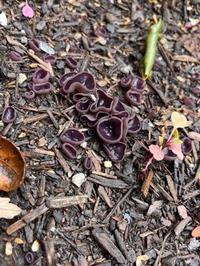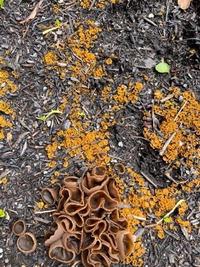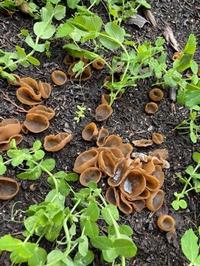The Latest Dirt - March 2024
Help Desk Solves Fungi Mystery
By Sara Hoyer
The Help Desk recently received the following questions from a local gardener about mystery mushrooms in their gardens. Are the attached photos depicting mushrooms? Are these growths harmful to my vegetable plants or to me? If so, how do I get rid of them?
Thank you for contacting the UC Master Gardener Program help desk with your questions about the odd-looking growths in your garden. You asked if the growths are mushrooms and whether they may harm you or your plants. Your photos are excellent making it very easy to identify them as fungi in the Pezizaceae family. These are commonly known as cup fungi. This fungi family produces mushrooms that grow in the shape of a cup. There are over 200 species of cup fungus. There are over 200 species of cup fungus.
Cup fungi do not feed on plants or other live organisms but on dead, rotting organic matter in the soil or mulch. These and other fungi perform an important ecological role by breaking down organic matter, recycling nutrients, and making those nutrients available to plants. Fungi prefer moist conditions, so there is no mystery why you are seeing this growth occurring now, with the wet weather we have been having lately.

These fungi are harmless to our plants but may be harmful if eaten, causing seriously unpleasant stomach upsets. If you believe pets or children might eat them, you can scrape them up and put them in the green waste bin. If you are not concerned about them being consumed by children or pets, rather than removing them, you can discourage their growth by lightly raking the top few inches of the soil between your plants to loosen them and help them dry more quickly. This removal can be done with a hand trowel or small hand cultivator, carefully avoiding damaging plant roots. Or you can leave them. While the weather remains cool and rainy, there will most likely be more of them popping up, but as soon as the rain stops and the soil dries and warms, they should stop appearing in your garden.
I hope this information is helpful. If you have further questions or concerns, please contact us again. We are always glad to help.



